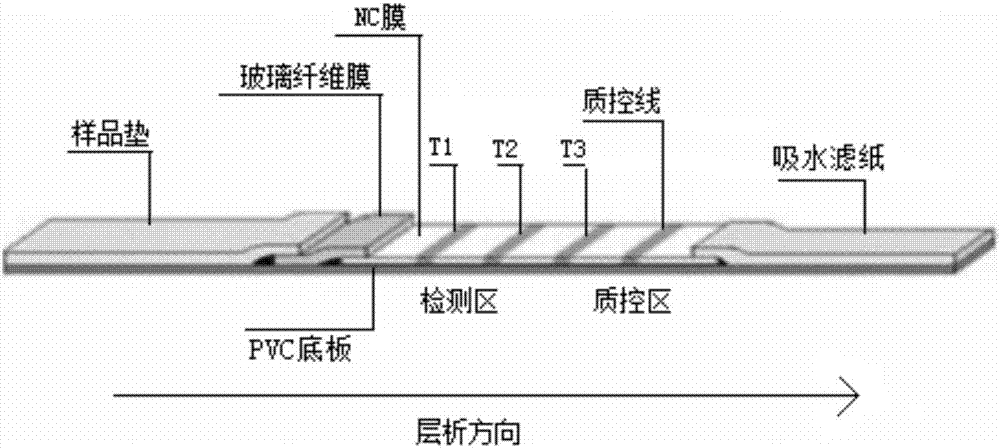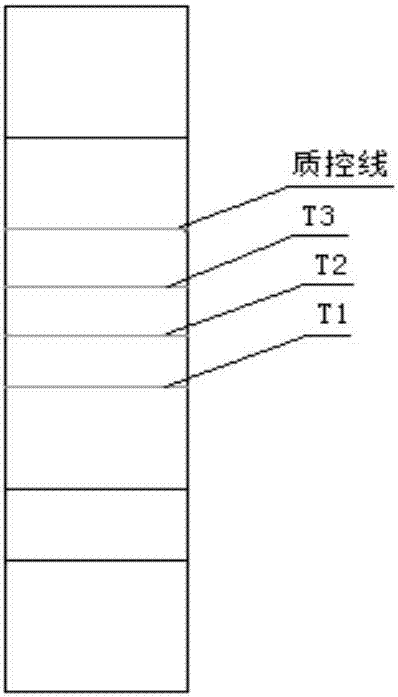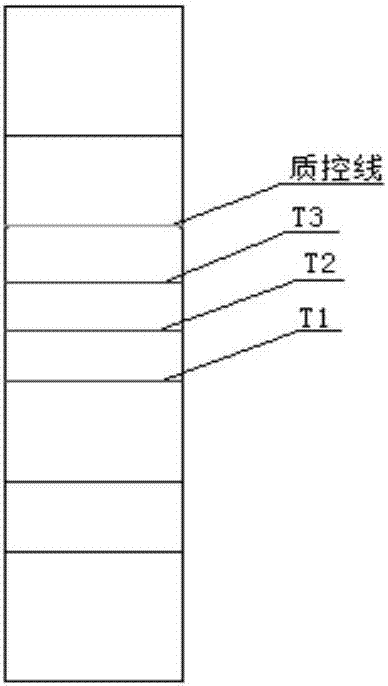Test paper based on photosensitive meso-porous silicon-based molecular imprinting microsphere and preparation method thereof
A technology of molecularly imprinted microspheres and test strips, which is applied in the direction of chemical reaction of materials for analysis, and material analysis by observing the influence of chemical indicators, to enhance the adsorption capacity, solve the problem of adsorption residues, and be widely used. Effect
- Summary
- Abstract
- Description
- Claims
- Application Information
AI Technical Summary
Problems solved by technology
Method used
Image
Examples
Embodiment 1
[0038] Example 1: Preparation of detection test paper based on photosensitive mesoporous silicon-based molecularly imprinted microspheres
[0039] The test strip can change the template molecule according to the detection index. Take aflatoxin, anisidine, and sodium dodecylbenzenesulfonate (DBS), important markers of waste oil, as examples:
[0040] (1) Preparation of photosensitive mesoporous silicon-based molecularly imprinted microspheres:
[0041] a) Mesoporous SiO 2 Double-bond modification of nanospheres: using a sol-prepared method to mesoporous SiO 2 Nanospheres are used as the carrier, and 3-(trimethoxysilyl)-propyl methacrylate (MPS) is used as the raw material to introduce double bonds. Specifically, mesoporous SiO 2 Nanospheres were suspended in MPS solution, stirred magnetically at 50°C for 5 hours, collected and separated, washed repeatedly with water, and dried under vacuum at 50°C;
[0042] b) Preparation of photosensitive mesoporous silicon-based molecularl...
Embodiment 2
[0046] Example 2: Control of shell thickness of photosensitive mesoporous silicon-based molecularly imprinted microspheres and evaluation of core-shell binding firmness
[0047] Controlled Modification of SiO During Microsphere Surface Polymerization 2 , the molar ratio of the functional monomer and the initiator, the polymerization reaction temperature, the reaction time, etc. to obtain microspheres under different conditions, and the thickness of the microspheres was detected by TEM. Then take 50 mg of microspheres, place them in 5 mL centrifuge tubes, add 3.0 mL of methanol solutions with different concentrations of templates, shake on the shaker for 24 hours, take the supernatant and dilute with methanol, and then use an ultraviolet spectrophotometer to detect the concentration of template molecules. Concentrations were measured 3 times in parallel and the average value was taken. Then calculate the adsorption capacity of the microspheres. The conditions corresponding to...
Embodiment 3
[0062] Embodiment 3: minimum detection limit and selectivity evaluation of test strips
[0063] 1. Determination of the minimum detection limit of test strips
[0064] Aflatoxin, anisidine and DBS standard substances were made into solutions with serial concentrations (0-100 μg / mL), and 100 μL were added dropwise to the test strip sample pad prepared in Example 1 for detection, repeated 3 times ; By visual observation, the minimum concentration when the degree of discoloration of the test strip detection line is significantly less than the degree of change of the color of the control quality control line is the detection limit of the test strip by naked eyes; wherein the detection limit of aflatoxin is 0.5 μg / mL, the detection limit of anisidine was 0.5 μg / mL, and the detection limit of DBS was 1.0 μg / mL (Table 5).
[0065] Table 5 Molecularly imprinted microsphere detection test paper detection results of aflatoxin, anisidine and DBS
[0066]
[0067]
[0068] Note: +...
PUM
 Login to View More
Login to View More Abstract
Description
Claims
Application Information
 Login to View More
Login to View More - R&D
- Intellectual Property
- Life Sciences
- Materials
- Tech Scout
- Unparalleled Data Quality
- Higher Quality Content
- 60% Fewer Hallucinations
Browse by: Latest US Patents, China's latest patents, Technical Efficacy Thesaurus, Application Domain, Technology Topic, Popular Technical Reports.
© 2025 PatSnap. All rights reserved.Legal|Privacy policy|Modern Slavery Act Transparency Statement|Sitemap|About US| Contact US: help@patsnap.com



